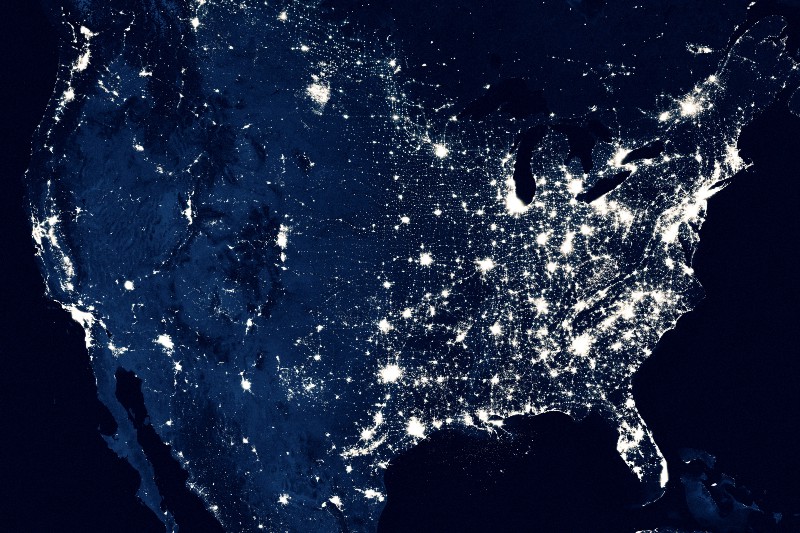In his cover story for the current issue of The New Republic, climate activist Bill McKibben makes a stirring case that climate change is World War III — not “like” World War III, but literally a war by any reasonable accounting of the threat it poses to our way of life. And, following his non-metaphor to its logical conclusion, McKibben argues that we need a full-scale mobilization of our economy to fight this war, with the same all-out determination the U.S. and its allies marshaled to win World War II.
What would this mobilization look like? McKibben is hardly the first climate hawk to turn to America’s wartime history for inspiration — references to World War II’s Manhattan Project as well as the Cold War’s Apollo Program have become battle-worn clichés in the clean energy discourse over the years. But are one-off scientific research programs to develop nuclear weapons and engineer the moon landing really the right analogies for how we can win the war on climate? Is there a clean energy superweapon waiting to be discovered that will annihilate the forces of carbon, if only we increased our R&D funding?
Some commentators seem to think so. Also this week, ClimateWire published the latest update on the ongoing saga between two occasionally-competing factions among climate allies. On one side — let’s call them “technologists” — are those that believe that today’s clean energy technologies aren’t sufficiently advanced, and that we should focus our efforts on developing new “breakthroughs” to win the war. This perspective has become widely associated with Bill Gates after he and other wealthy investors announced the formation of a Breakthrough Energy Coalition that would funnel billions of dollars into the search for this clean energy “moonshot.”
On the other side are those that believe that we already have the weapons we need to fight this war, and our focus should be on deploying today’s clean energy technologies on as wide a scale as possible. This “deployment” camp believes the biggest obstacles we face are things like political will, regulatory red tape, and financing — not technology. While this increasingly populous group doesn’t dismiss the idea that technology improvements can be important, they often accuse the “technologists” of undermining the enormous progress and promise of clean energy today by chasing after hopes for tomorrow.
In case you couldn’t guess, we at Mosaic are firmly on the side of “deployment.” Since our founding in 2011, we’ve seen the amazing growth of the solar industry first-hand and been inspired by the deep conviction of our customers that going solar isn’t just about saving money, it’s about saving our planet. We’ve also spent five occasionally very long years evolving our business model, learning to navigate regulations, and hustling to secure the capital we need to grow from investors that were often initially unfamiliar with the residential solar market. None of these challenges required technology to solve — they required time, hard work, and commitment to our vision of a 100% clean energy future.
McKibben is very much an advocate for deployment as well. While he gives the Manhattan Project a passing mention in his essay, he spends much more time on the down-and-dirty work of industrial mobilization. In particular, he cites a roadmap produced by Stanford University researchers that shows how we can reach 80% renewable power by 2030 and 100% by 2050 simply by deploying today’s technologies on a (very) large scale. The authors present a detailed scenario for the construction of hundreds of huge new factories employing millions of Americans to manufacture the thousands of gigawatts of solar panels and wind turbines needed to achieve this goal — no small feat, but also not unprecedented when compared to the similarly massive mobilization effort that went into manufacturing the tanks, planes, and ships that won World War II. All that’s missing is the collective spirit to accept the challenge and face it head on.
So, is the climate war winnable? Absolutely. And, regardless of what clean energy technology breakthroughs may come in the future, we need to start laying the foundation for victory by breaking down barriers and deploying today’s increasingly low-cost, zero-carbon technologies. After all, to return to McKibben’s historical precedent, while the Manhattan Project may have helped to finish the war, it was first won through years of shared effort and determination on the ground. And, unlike the grim work of traditional war, we think the front lines of the clean energy revolution are just about the most hopeful, exciting place to be in the world right now.
